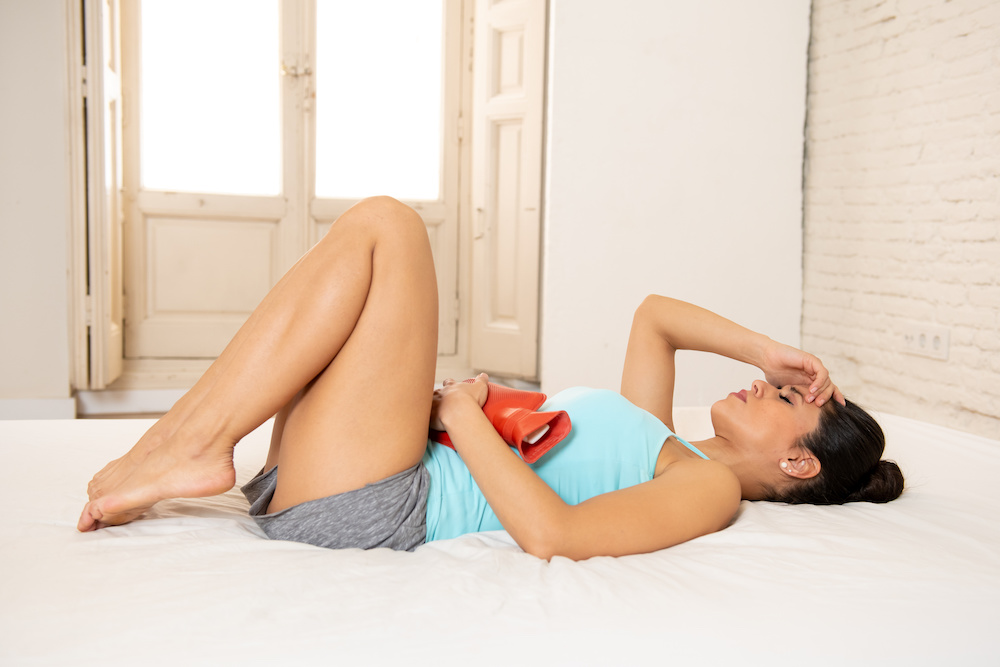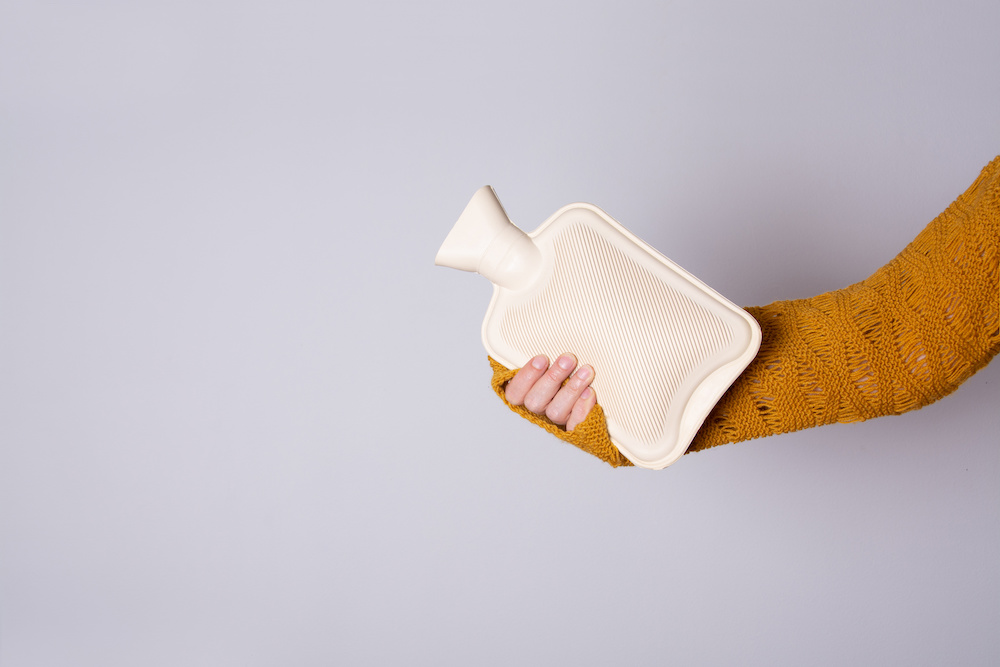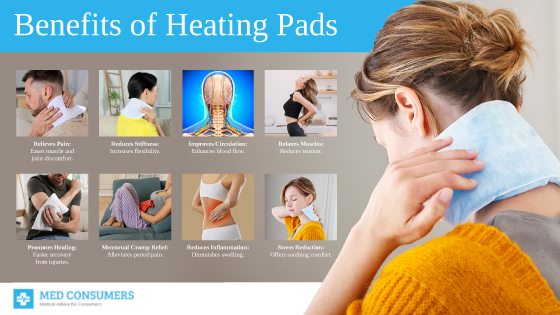Muscle cramps, also called muscle spasms, are sudden, sharp, and excessively painful contractions or tightening of the muscles.
The exact cause of muscle cramps is unknown, but they are associated with multiple risk factors like tight and inflexible muscles, poor physical condition, and electrolyte imbalances.
If you suffer from cramps from time to time, you might be looking for safe, effective, and fast-acting remedies for such excruciating pain.
One of the most popular remedies for muscle cramps is heat therapy. That’s why it isn’t surprising for many to wonder and ask, “Why does heating pad help cramps?”

What Are Muscle Cramps?
As noted, a muscle cramp is a sudden, involuntary contraction of the muscles.
Although it can be debilitating, the good thing is that muscle cramps are generally harmless and go away after a few minutes.
Symptoms
Besides the sudden, sharp pain, you may also see or feel a hard lump of muscle tissues beneath your skin.
You may also find it impossible to use or move the affected area during a muscle cramp.
Causes
Muscle cramps are often caused by a lot of things, such as dehydration or muscle strain.
Our muscles require plenty of water to function properly. Without enough fluid and electrolytes, they can become highly susceptible to spasms or contract involuntarily.
You may also experience muscle cramps after holding a position, such as sitting or standing, for a prolonged period.
This cramp is caused by fluid buildup in the leg veins or poor blood circulation.
That said, although most causes of muscle cramps are harmless, they might be an indication of an underlying medical condition, such as:
- Nerve Compression
Compression of the nerves in the spine, also called lumbar stenosis, can cause cramp-like pain in the legs.
Aside from the pain that usually worsens the longer you move or walk, this condition is associated with other symptoms like reduced flexibility, redness or swelling, tingling, numbness, and muscle weakness.
- Poor Blood Supply
Poor blood flow to your legs may also cause sudden, painful cramping.
During exercise, the arteries that supply blood to your leg muscles narrow, causing a cramp-like pain that goes away soon after you stop exercising.
In addition to being unable to move your limb, you may feel a knot, especially in the calf muscle.
- Mineral Deficiency
Tremors, twitches, and muscle cramps can indicate a magnesium deficiency. They may also result from too little potassium or calcium in your body.
People taking medications to manage high blood pressure are more at risk of mineral deficiency.
Risk Factors
Aside from these causes, other factors can increase your risk of muscle cramps.
They include:
- Age
We lose our muscle mass as we get older, so people aged 40 and above are more likely to experience muscle cramps because their muscles can get overstressed more easily.
- Pregnancy
Carrying extra weight, changes to a woman’s metabolism, vitamin deficiency, and being too active or not active enough can all cause muscle cramps during pregnancy.
- Medical Conditions
People with diabetes, thyroid disorder, and nerve or liver problems are at a higher risk of muscle cramps.
Why Does Heating Pad Help Cramps?
There are plenty of ways to soothe muscle cramps, but one of the most effective is using a heating pad.
Applying heat encourages healing during the body’s recovery process from muscle soreness or pain.
During a muscle spasm, the supply of oxygen and other nutrients to the blood vessels is constricted.
With delayed onset muscle soreness caused by strenuous activity, for example, more lactic acid is produced and gets trapped in the constricted vessels.
In this case, the application of heat helps dilate the blood vessels and promotes blood flow. It also boosts the supply of nutrients and oxygen to the affected area and aid in eliminating lactic acid.
Using a heating pad can also facilitate the stretching and loosening of tight muscles to alleviate stiffness around the joints.
Through heat therapy, your muscles get more relaxed and your joints become more flexible.
Experts also say that applying heat also plays a significant role in the gate theory of pain.
This theory states that different nerves carry different signals or messages from an area of the body to the brain.
The brain then puts all those messages together. Then, your body experiences the sum of those messages as a sensation.
For example, if you are experiencing terrible muscle spasms during a HIIT workout, the pain receptors of those muscles are activated.
They also work full time to send constant pain signals back to your brain.
When you apply a heating pad to the sore area, you activate different nerves to transmit the new, non-painful signal to the brain.
As a result, the feeling of pain is reduced.
Heating Pads and Period Cramps
Discomfort during the menstrual period isn’t uncommon, especially among younger people. Chemicals produced in the lining of the uterus trigger those painful contractions.
Menstrual cramps can cause intense pain in the abdomen, lower back, hips, and thighs. In fact, research shows that one in ten women experiences intense period cramps that hinder them from doing their daily activities.
Heating pads have been a time-tested therapy for menstrual pain. They are extremely helpful in pain relief because they increase blood flow and help relax cramped muscles.
Many women turn to the soothing warmth of heating pads to help ease painful menstrual cramps.
One study conducted by researchers at the University of Cincinnati found that the use of a heating pad can result in a significant decrease in menstrual pain.
Another theory about how heat therapy works for easing menstrual cramps is it helps loosen up the myometrium.
The myometrium is the middle layer of the uterine wall where the smooth muscles that contract and cause pain can be found.
With heat therapy, the constricted blood vessels can relax and allow more blood flow to the uterus.

How to Use a Heating Pad to Ease Cramps
Now that you know why does heating pad help cramps, your next question might be, “What is the best way to use a heating pad?“
There are two different ways to use a heating pad to reduce cramps. The first method is using it by itself.
Simply apply the pad over the area where you experience cramps.
If you’re suffering from period cramps, you can place it over your lower abdomen or back.
Another way of using a heating pad to deal with cramps is combining it with essential oils.
Essential oils like lavender, ginger, lemon balm, cinnamon, clove, rose, and peppermint provide therapeutic heat.
Thus, it can significantly reduce the pain and discomfort associated with menstrual cramps.
Before placing a heating pad on your abdomen or back, apply a small amount of your chosen essential oil to your skin.
Here are some more tips when using a heating pad:
Always Start With the Lowest Setting
Always begin on the lowest heat setting and gradually increase the temperature as needed.
Choose a heating pad with temperature controls that let you adjust the heat according to what’s most comfortable for you.
If your heating pad doesn’t have temperature control, you may wrap it in a towel or cloth before applying it to your skin.
Doing so should help protect your skin from possible burns.
Don’t Fall Asleep While Using It
You should not fall asleep using a heating pad, as it can overheat your skin.
If buying a heating pad, it’s best to choose a pad with an auto-off feature, especially if you’re pregnant or easily fall asleep.
Be Mindful of Your Body Conditions
Never apply a heating pad to your skin with a cut or open wound. Also, use caution if you’re pregnant.
While using a heating pad during pregnancy is generally safe, you should limit it to 15 or 20 minutes.
In addition, only use the lowest heat setting as prolonged exposure to high heat can be dangerous to your developing baby.
Inspect Your Heating Pad
It goes without saying that you should never use an electric heating pad that has a cracked or broken cord.
You must also ensure that your heating pad has no holes and cracks.

How Long Can You Use a Heating Pad?
How long you use a heating pad will depend on the type you use and the pad’s temperature settings.
Ideally, you should use a heating pad for 15 to 20 minutes to ease muscle cramps.
After this, you can evaluate your pain or discomfort level and continue using the pad as necessary.
Heating Pads for Your Menstrual Cramps
Heating pads are easy, inexpensive, and effective remedies for muscle cramps.
They help ease pain by promoting blood flow to the cramped muscles, reducing inflammation and helping muscles relax.
For best results, use a high-quality heating pad and follow the tips and suggestions we’ve outlined above.
If you do it right, you can say goodbye to cramps in a relatively short period.
However, if you tend to experience muscle cramps very often or your cramps are too severe, it’s best to consult your doctor for further health checks and get a prescription for the best painkillers.